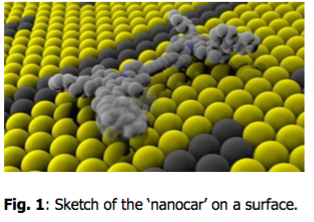Helical molecules in flatland: chiral recognition, spin-filtering and molecular machines
University of Zurich
Nanoscale Materials Science, Empa, Swiss Federal Laboratories for Materials Science and Technology, Überlandstrasse 129, CH-8600 Dübendorf, Switzerland
Department of Chemistry, University of Zurich, Winterthurerstr. 190, CH-8057 Zürich, Switzerland
Molecular recognition among chiral molecules on surfaces is of paramount importance
in biomineralization, enantioselective heterogeneous catalysis, and for the separation
of chiral  molecules into their two mirror-image isomers (enantiomers) via crystallization or
chromatography. Understanding the principles of molecular recognition in general,
however, is a difficult task and calls for investigation of appropriate model Wsaruym
Nsobteelpremise sosei.n großOes Dningesind popular aphpttp:r//wowwa.fazc.neht/aktueills/feuilltetoh/feamirlie/wibe-eryklaere-ich-s-...
studying intermolecular interactions on ernst_colloquium well-defined solid surfaces,
which allows in particular the use of scanning tunneling microscopy (STM). Examples
of chiral amplification via the so-called ‘sergeant-and soldiers’ effect as well as
manipulation of chiral adsorbates via inelastic electron tunneling will be presented.
In a Pasteur-type experiment at the nanoscale, molecules that constitute a dimer are
spatially separated with a molecular STM tip and their absolute handedness is determined
with submolecular resolution STM. Moreover, we report spin-dependent filtering of
electrons by monolayers of these helical molecules. Finally the first successful electrical
current-driven, unidirectional motion of a synthetic molecule will be presented (Fig.
1).
molecules into their two mirror-image isomers (enantiomers) via crystallization or
chromatography. Understanding the principles of molecular recognition in general,
however, is a difficult task and calls for investigation of appropriate model Wsaruym
Nsobteelpremise sosei.n großOes Dningesind popular aphpttp:r//wowwa.fazc.neht/aktueills/feuilltetoh/feamirlie/wibe-eryklaere-ich-s-...
studying intermolecular interactions on ernst_colloquium well-defined solid surfaces,
which allows in particular the use of scanning tunneling microscopy (STM). Examples
of chiral amplification via the so-called ‘sergeant-and soldiers’ effect as well as
manipulation of chiral adsorbates via inelastic electron tunneling will be presented.
In a Pasteur-type experiment at the nanoscale, molecules that constitute a dimer are
spatially separated with a molecular STM tip and their absolute handedness is determined
with submolecular resolution STM. Moreover, we report spin-dependent filtering of
electrons by monolayers of these helical molecules. Finally the first successful electrical
current-driven, unidirectional motion of a synthetic molecule will be presented (Fig.
1).
